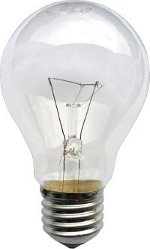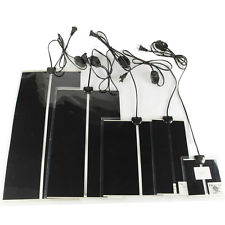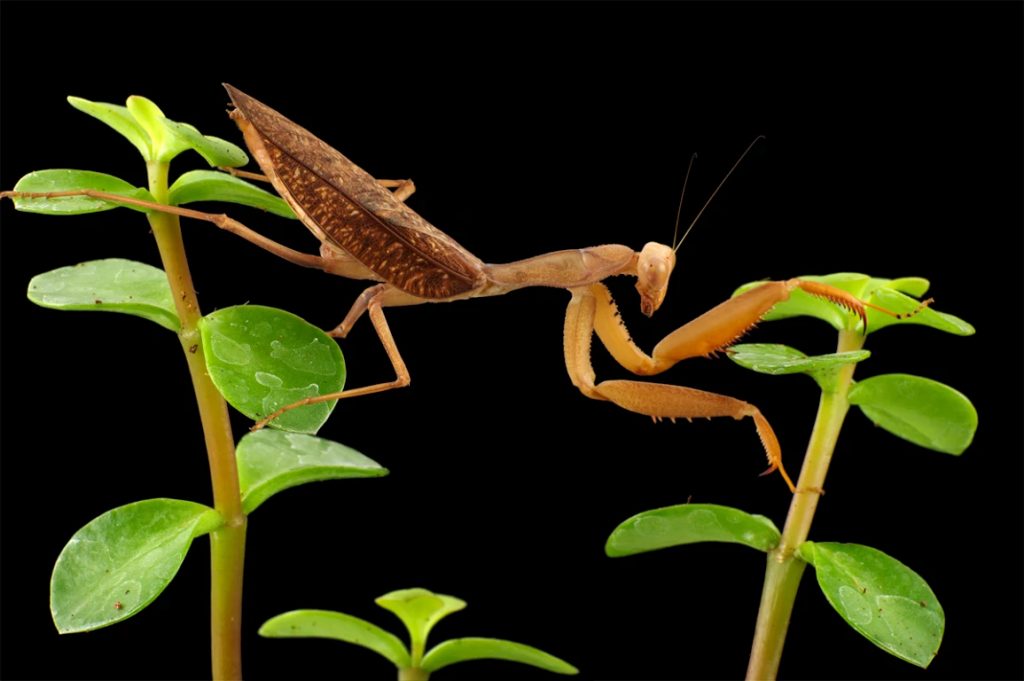Insects are not able to regulate their body temperature like mammals and birds do. They can only be warmed by the environment in which they live. Every species of insect has its own specific needs regarding the temperature of their surroundings. Make sure to read the caresheet of the insect of your choice to find out what that species really needs.
The temperature inside an enclosure can be increased by heating it with either a light bulb, heat mat, heat cable or by placing the enclosure inside a room that already has the desired temperature. Which method of heating you will use depends on the enclosure, your needs and esthetic reasons.
Use a thermometer to measure the temperature inside the enclosure. It is advicable to first set up the enclosure, turn on the heating and measure the temperature cycle before introducing your insects to the enclosure. In this way you can prevent accidents like overheating your pet insect or exposing it to cold.
Heating by light bulbs

Heating with a light bulb
Light bulbs do not only emit light, but they also emit heat. Therefore light bulbs are a cheap and handy way to increase the temperature of an insect enclosure. By choosing a wattage that is suitable for the amount of extra heat you need to add in the terrarium, you can easily attain the desired temperature. Light bulbs generally heat the terrarium in a natural way, as heat in nature is produced by light too. Lamps are also suitable to create temperature gradients because their main point of focus can be adjusted.
Fluorescent light tubes or energy saving light bulbs are not suitable to heat up a terrarium, because they do not emit much heat.
Heating by heat mat or heat cables
Using a heat mat is an excellent way to heat your insect inclosure. The mats are easy to use, don’t take up a lot of space and generally won’t get too hot. That makes it a safe and easy way to increase the ambient temperature for your pet insects.
Companies that sell reptile supplies often also sell heat mats or heating cables. A heat mat is a flat mat that can be plugged into a power socket. The mat will warm up to a certain temperature depending on the type and the environmental temperature.
A heating cable is similar to a heating mat, the only difference is that the heating cable is a long thin cable that emits heat.
Heating mats and heating cables usually cannot regulate their temperature, they are either emitting heat or not emitting heat. Therefore you should match your heat mat to the size of the terrarium, to the desired temperature and to the temperature in the room.
The bug room
The easiest way to get the desired temperature inside an enclosure, is just placing it in a room with the desired temperature. The temperature inside the enclosure will quickly adapt to the ambient temperature. Not everyone will have the space do dedicate a full room to their pet insects, but this is the best way to do it. In such a room you could place mesh terrariums, as they do not need any insulation. Make sure the humidity is also high enough in the room.
Preventing extreme temperatures
It’s important to prevent too high or too low temperatures for your insects. A short bout of low temperature is usually OK, but too high temperatures can quickly kill your bugs.
To prevent temperatures that are too high, avoid placing the enclosure into direct sunlight. Especially glass enclosures will quickly heat up, sometimes above 50 degrees Celsius within an hour. This is lethal to most insects.
To prevent temperatures dropping too low, do not place the enclosure in rooms with a draft, open window or buildings in which the heating is switched off at night or during weekends. Always measure the temperature with a thermometer.
Temperature cycles are good
Insects do well when the temperature of their enclosure matches the temperatures in their natural habitat. This means that temperatures rise during the day and drop during the night. This can be achieved by connecting the heating (so light bulbs or heat mats) to a time switch. The time switch will automatically turn the heating on and off at the times you set it to. Of course make sure that the temperatures stay in the desired range.


